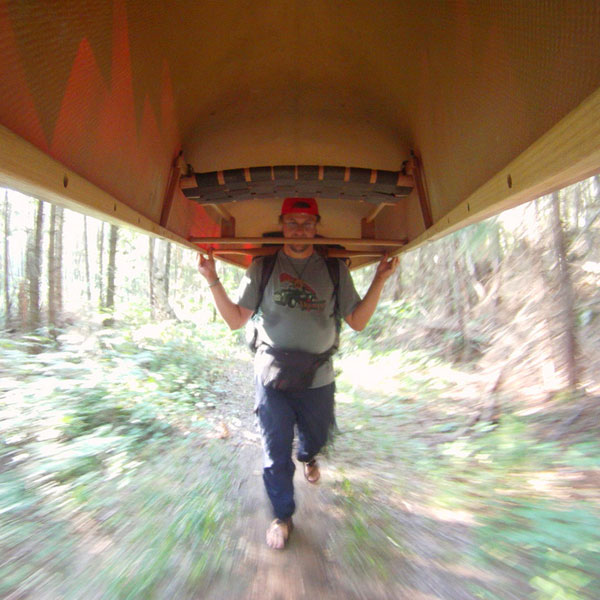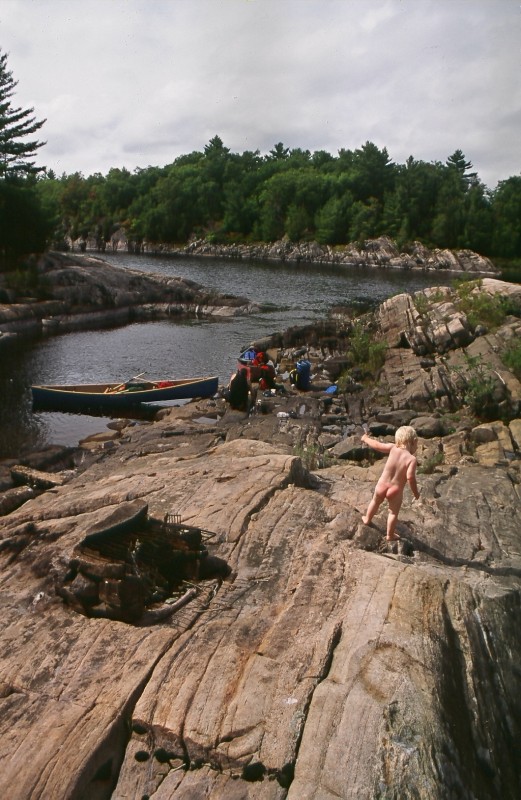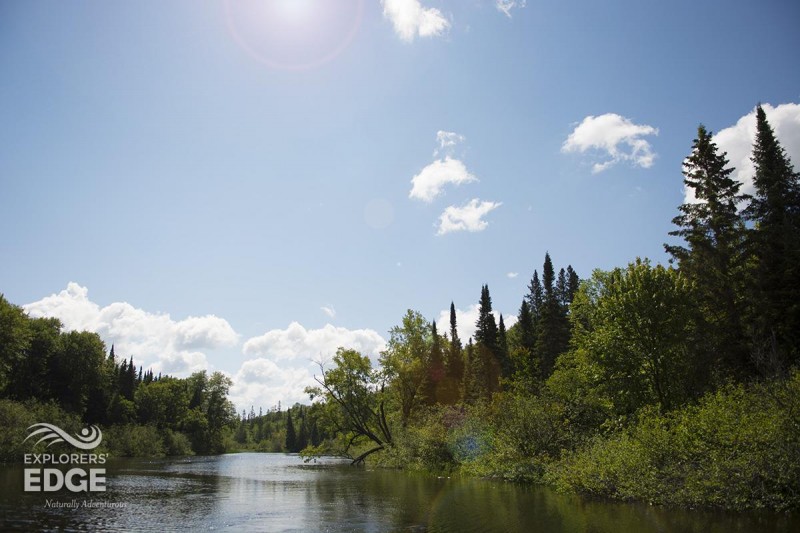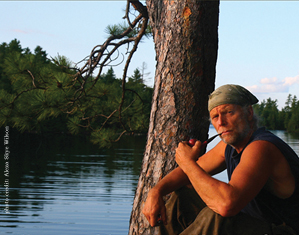
The Accessible Wilderness of Muskoka and Parry Sound
Renowned outdoor adventurer and Muskoka resident Hap Wilson inspires others to discover the area’s beautiful wilderness – not far from Canada’s largest city.
The term “wilderness” is somewhat of an illusory idea. We can define it in whatever terms that comply with our particular brand of adventure, from outdoor explorations that can take us hundreds of kilometers from any road or, perhaps, as just a stone’s throw from our own backyard.
I live in north Muskoka. It was my choice to raise a family within the reach of what I would classify as an “accessible wilderness.” Known primarily as being Canada’s summer cottage country, if you investigate a little deeper off the back roads of this popular area, you will discover delectable pockets of…yes…wilderness.
 The Explorer’s Edge region, for my family and a growing coterie of explorers, is an adventure Utopia. Sure, I’ve been to the arctic many times over the past two decades and had far-flung adventures into the vast tundra plain or boreal veld, but there are times when you just want to get out there for a day or two and enjoy the same sense of isolation or aloneness close by. Time, for many, is a great consideration in today’s demanding world. To be able to drive easily to the Magnetawan River in the Almaguin Highlands, for instance, and paddle it over two or three long weekends, is a boon to the busy life schedule for a lot of folk.
The Explorer’s Edge region, for my family and a growing coterie of explorers, is an adventure Utopia. Sure, I’ve been to the arctic many times over the past two decades and had far-flung adventures into the vast tundra plain or boreal veld, but there are times when you just want to get out there for a day or two and enjoy the same sense of isolation or aloneness close by. Time, for many, is a great consideration in today’s demanding world. To be able to drive easily to the Magnetawan River in the Almaguin Highlands, for instance, and paddle it over two or three long weekends, is a boon to the busy life schedule for a lot of folk.
The northern part of the region is all accessible, as I discovered early on. I bought my first cedar-canvas canoe in 1972 and headed straight for the Restoule River. The objective was to paddle the Little French and French Rivers, and time allowed us to include the less acclaimed Restoule River; it was one of the highlights of the trip.
 While mapping out my “Wild Muskoka” book, I wanted to start a trip in one of the busiest access points in Algonquin Park, at Canoe Lake. Heading west to the Gill Lake portage, I was on a route that saw little traffic at all – within one hour’s paddle. The goal was to reach the headwaters of the Big East River at West Harry Lake. It was one of the best early-season trips I can remember, ending at a riverside pub in the centre of Huntsville after four days of paddling bliss and great whitewater. For river paddlers not averse to portaging through knee-deep snow in late March, the Big East from McBrien Rapids to Arrowhead Park is one of the best whitewater runs in the district…same with the Hollow or Seguin rivers – all easily accessed, all one to two day adventures.
While mapping out my “Wild Muskoka” book, I wanted to start a trip in one of the busiest access points in Algonquin Park, at Canoe Lake. Heading west to the Gill Lake portage, I was on a route that saw little traffic at all – within one hour’s paddle. The goal was to reach the headwaters of the Big East River at West Harry Lake. It was one of the best early-season trips I can remember, ending at a riverside pub in the centre of Huntsville after four days of paddling bliss and great whitewater. For river paddlers not averse to portaging through knee-deep snow in late March, the Big East from McBrien Rapids to Arrowhead Park is one of the best whitewater runs in the district…same with the Hollow or Seguin rivers – all easily accessed, all one to two day adventures.
The full force of the Muskoka watershed unites as a single, powerful entity along the Bala Reach, splitting off into two separate canoe routes – the Musquash and the Moon Rivers. In the springtime, the Moon is a veritable demon with violent chutes and rapids. It quickly dissipates by mid-June to a placid, laid-back cruise for novice paddlers.
What people sometimes forget is that Muskoka, the Almaguin Highlands and the Parry Sound areas have always been a collective destination to get away from the noise and bustle of the city, just as much as Algonquin Park. For modern explorers, perhaps consisting of a family with a mortgage and teenage kids, if they can find the time and get to the Explorers’ Edge region of Ontario, they will discover an accessible Canadian wilderness waiting for them too.
Hap Wilson is a world renowned Environmentalist, Artist, Author, Wilderness Guide, Trial Builder, Cartographer and award winning Photographer. His current project is knitting together the Trans Canada Trail from Thunder Bay to Manitoba (900km) researching historical canoe routes for yet another guidebook as part of the Path Of The Paddle project. Wilson lives in Rosseau, Ontario with his longtime love and cherished wife, Andrea, along with their two adorable children.
Photos show the Moon River near Bala (courtesy of Hap Wilson) and the Magnetawan River.
![]()

